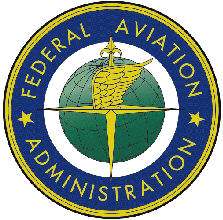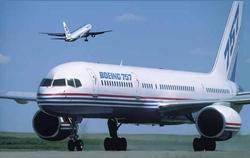 The FAA has published a
comprehensive final rule that "further reduces the risks for
passengers and crews flying long-range regularly scheduled
commercial routes over remote areas."
The FAA has published a
comprehensive final rule that "further reduces the risks for
passengers and crews flying long-range regularly scheduled
commercial routes over remote areas."
The rule effectively changes the current limitations and opens
up routes for twin-engine passenger and cargo planes, and sets
uniformly high standards for all commercial passenger planes when
they fly routes more than three hours from an airport.
The new rule takes into account the extraordinary reliability of
today’s aircraft engines. It covers the design, maintenance
and operation of airplanes and engines for extended operations
flights — commonly called ETOPS — that go beyond
certain distances from the nearest airport.
“Twenty-one years of ETOPS experience shows us that modern
jet engines rarely shut down in flight,” said FAA
Administrator Marion C. Blakey. “Our new safety requirements
for long-range flights are designed to prevent mechanical problems
and protect passengers and the flightcrew in the rare event of an
emergency diversion.”
Since airplanes occasionally divert for reasons unrelated to the
engines, such as mechanical problems or passenger medical
emergencies, the rule requires that airplane systems be able to
support lengthy diversions in remote and sometimes harsh
environments. The rule also requires pro-active flight planning,
crew training and plans to have facilities at or close to each
diversion airport that will protect passengers and crew from the
elements and make them comfortable.
The rule published today formalizes existing policy, industry
best practices and international standards to ensure long-range
flights operate safely in the Polar regions, the South Atlantic
Ocean between South America and Africa, and the southeastern South
Pacific Ocean. Few U.S. carriers currently operate in these areas,
but these operations will likely increase in the future.
 In
formulating the new regulations, the FAA sought advice from a broad
range of domestic and international aviation experts. In 2000, the
FAA chartered an Aviation Rulemaking Advisory Committee (ARAC) to
review existing policy and requirements and develop standardized
requirements for extended operations in the 21st century. The new
rule is based largely on the ARAC’s report, which reflects a
consensus among those aviation experts on what needed to be
done.
In
formulating the new regulations, the FAA sought advice from a broad
range of domestic and international aviation experts. In 2000, the
FAA chartered an Aviation Rulemaking Advisory Committee (ARAC) to
review existing policy and requirements and develop standardized
requirements for extended operations in the 21st century. The new
rule is based largely on the ARAC’s report, which reflects a
consensus among those aviation experts on what needed to be
done.
The evolution of extended operations has involved a step-by-step
process of ever-increasing approvals based on industry needs.
Two-engine extended operations increased worldwide from fewer than
1,000 per month in 1985 to more than 1,000 per day in 2004.
Meanwhile, extended operations engine reliability has improved to
the point that engine shutdowns occur less than half as often as
they did in the 1980s.
“In light of the dramatic increases in long-distance
flights, this rule will open up new routes for more aircraft and
will raise the bar on safety,” Blakey said.
 ANN's Daily Aero-Term (06.02.25): Minimum Friction Level
ANN's Daily Aero-Term (06.02.25): Minimum Friction Level ANN's Daily Aero-Linx (06.02.25)
ANN's Daily Aero-Linx (06.02.25) NTSB Prelim: Champion 7ECA
NTSB Prelim: Champion 7ECA Classic Klyde Morris (From 06.10.22)
Classic Klyde Morris (From 06.10.22) Airborne 05.30.25: Anti-Helicopter Bill, PW Strike Done, All-Electric Bristell
Airborne 05.30.25: Anti-Helicopter Bill, PW Strike Done, All-Electric Bristell




